This tutorial will show you how to fix computer sound volume too low in Windows 10, 8.1 and 7.
The “computer volume too low windows 10” is an issue that many people are experiencing. There are a few fixes to fix the problem, but they all require you to use third-party software.
You may find that the volume on our Windows PC has dropped too low at times. After upgrading to Windows 10 version 21H1, the loudness is unusually low. After downloading the Windows 10 May 2021 update, a handful of customers report experiencing low volume output issues, even when the volume level is set to 100. The problem might be caused by software, a hardware fault, or a combination of old and new settings. Actually, there are several critical settings in Windows that must be perfected in order to get decent sound quality. If the volume on your computer is too low on Windows 10, here are several possible remedies.
After the Windows 10 upgrade, there is a low sound.
This Sound volume too low issue in Windows 10 is most often caused by mismatched Audio Drivers and corrupted system files. The audio hardware device is malfunctioning, or the audio sound settings have been altered. If you’re having trouble with your computer volume on Windows 10, try the methods below.
Note: The solutions below may be used to solve a variety of audio sound-related issues, including audio sound not functioning, no audio output installed, no sound after a Windows update, and so on.
Volume Mixer should be checked.
Begin with the most basic solution. Check to see whether the Audio Device is correctly connected.
Check if the volume on the Audio Device is turned up; alternatively, you may need to check the Audio Device on several PCs to ensure that the Hardware device isn’t faulty.
To launch the window immediately below, right-click the speaker icon in the system tray and choose Open Volume Mixer. If the level is too low, check and boost the audio slider for third-party program open on the taskbar.
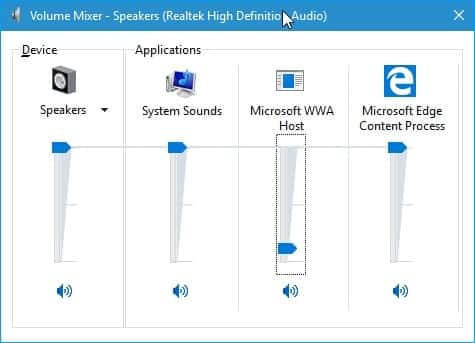
Physically clean your speakers.
If you’ve been using the same speaker for a long time, it’s possible that dust has built up on it, preventing the music from playing properly. Check to see sure your speakers are clean on the inside and exterior. If it isn’t already clean, clean it up and see if it improves performance.
Check out more gadgets.
If you’re having trouble with a Bluetooth speaker or a wired speaker with a woofer, try connecting it to a separate device to narrow down the problem.
Update the audio driver in Windows.
When troubleshooting an audio sound issue, the first step is to update or roll back the audio driver. Whatever sound system you have installed on your computer, you must maintain your device drivers up to date. If the sound issue seems to have begun after a recent driver update or Windows upgrade, it’s possible that the present Audio Driver is incompatible with the current Windows version. Because of this, we must first attempt the Driver, go backwards option or install the most recent Audio Driver.
Roll Back Driver
If the problem began shortly after the driver update, the Rollback driver will most likely assist in resolving the issue. This reverts the current audio driver to the old version, which had Audio Sound operating correctly.
- Press Windows + R, type devmgmt.msc, and then press Enter.
- This will launch the device manager, which will provide a list of all installed drivers.
- Increase the number of sound, video, and gaming controllers available.
- Select properties from the right-click menu of the installed audio driver.
- Navigate to the Driver tab and choose the Rollback driver option.
Note that the rollback option is only accessible if the driver software has just been upgraded to the most current version.
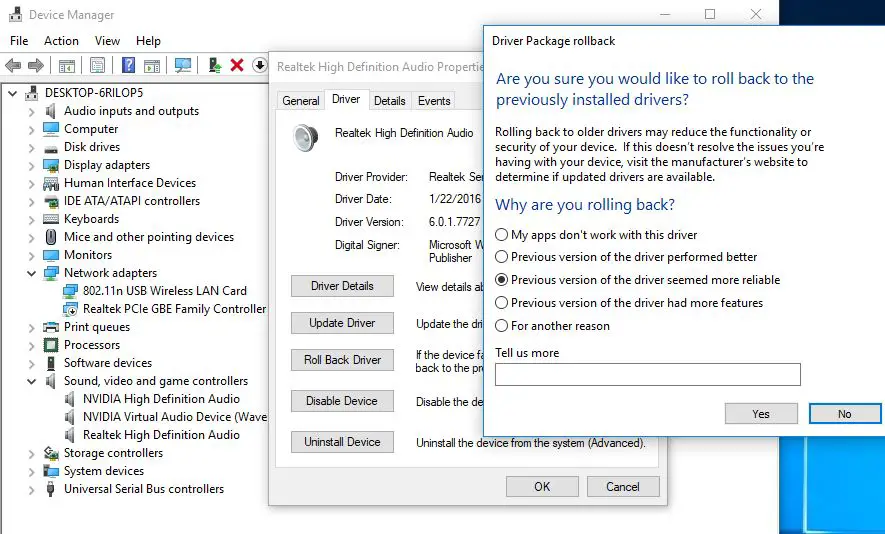
Select the reason why on the following screen. Follow the on-screen prompts to revert to the previous driver version. After that, restart Windows to get a fresh start, and then double-check that the Audio Volume is operating correctly. If not, follow the instructions below to download and install the most recent Audio Driver.
Audio Drivers should be updated
If you are unable to use the Roll Back Driver option. If you don’t have the option to roll back the driver, you’ll need to manually update/reinstall it by following the procedures below.
- Open Device Manager by typing devmgmt.msc again.
- Then add more controllers for sound, video, and games.
- Now pick remove Device from the right-click menu on the installed Audio driver.
- When prompted for confirmation, click Delete the Device Driver Software and select Uninstall, then restart Windows.
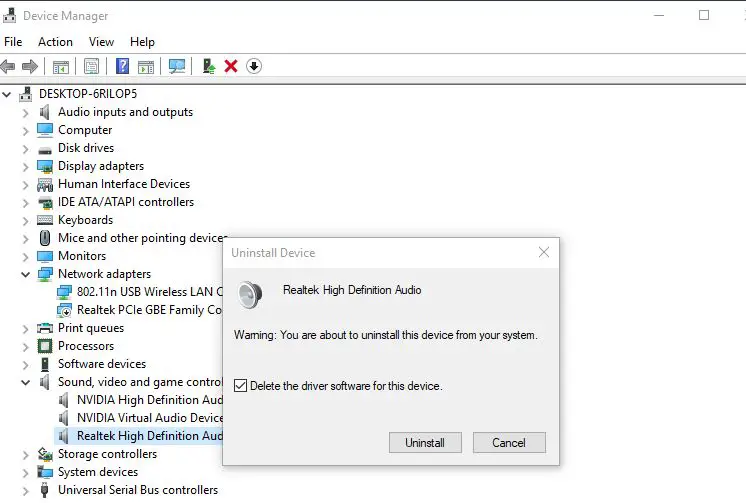
After the next reboot, Windows will search for and install the best available Audio Driver. Alternatively, you may open Device Manager again and verify whether the Audio Driver is installed; if it isn’t, click Action and choose Scan for Hardware Changes.
Also, go to the device manufacturer’s website and download and install the most recent Audio Driver software. I hope your issue will be repaired if you use the RollBack driver option or reinstall the Audio Driver.
Start the Windows Audio Troubleshooter program.
Windows has an integrated Audio Troubleshooting tool that automatically identifies and fixes many Windows Audio Sound related issues. Run the Audio Troubleshooter and let Windows take care of the issue.
- To enter the settings app, press Windows + I on your keyboard.
- To debug, go to Update & security, then troubleshoot.
- Click Run the troubleshooter after selecting playing audio.
- This will automatically identify and resolve the issues that are causing the Windows sound issue.
- After you’ve finished troubleshooting, restart Windows to see whether everything is operating correctly.
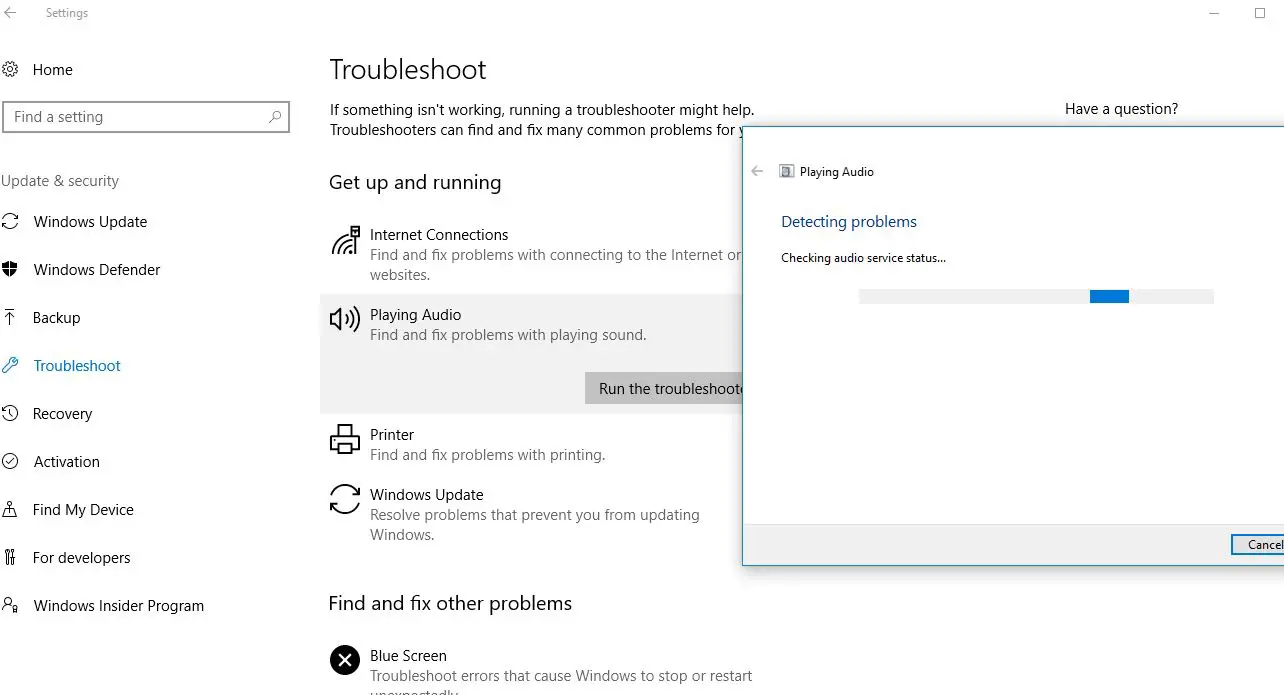
Change the bit depth and sample rate.
Right-click on the speaker icon in the taskbar’s right corner.
- Then choose Playback Devices from the drop-down menu.
- A new Sounds popup will appear; double-click on the speakers to launch it.
- Then go to the Advanced Tab on the Speakers properties.
- Set the bit rate to 24 bit/44100 Hz or 24 bit/192000 Hz by pulling down the menu.
- Both alternatives are available depending on the device’s capabilities.
- After that, click Apply and OK to save the changes, and then double-check that the low sound volume problem has been rectified.
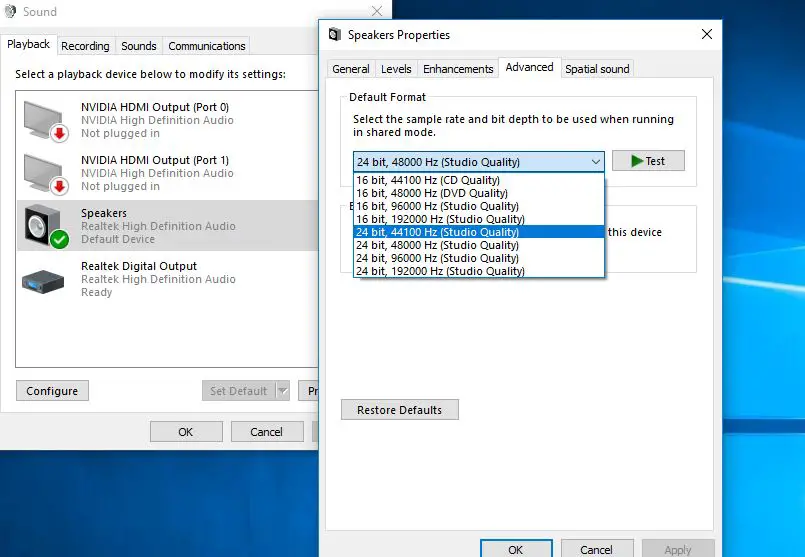
Modify your communication settings
Communication settings is a built-in Low Volume tool that aids users in getting better audio while using the computer to accept or make calls. This function may lower the volume of your computer’s sound by up to 100%. To alter the communication settings, click here.
- Select Sounds by right-clicking on the volume icon on the taskbar.
- Then go to the tab for communication. Select “Do nothing” under the option “When Windows detects communication activity.”
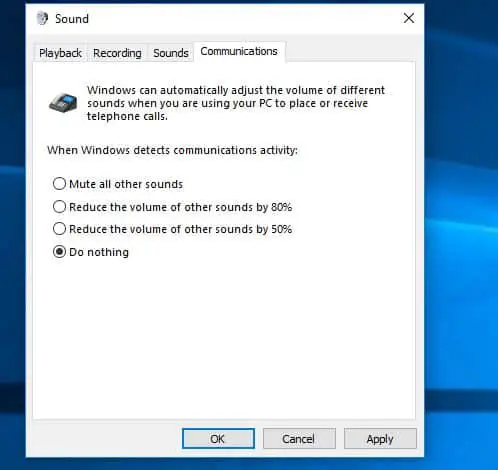
Loudness Equalization may be tweaked.
This is another setting you should look into since if this option isn’t enabled, it’s no surprise that your computer’s volume is lower. Right-click on the volume icon on the taskbar and choose Sound to change this option. Double-click Speakers under the Playback tab. Then, under the Enhancements tab under Speaker settings, choose Loudness Equalization and click OK to preserve your changes.
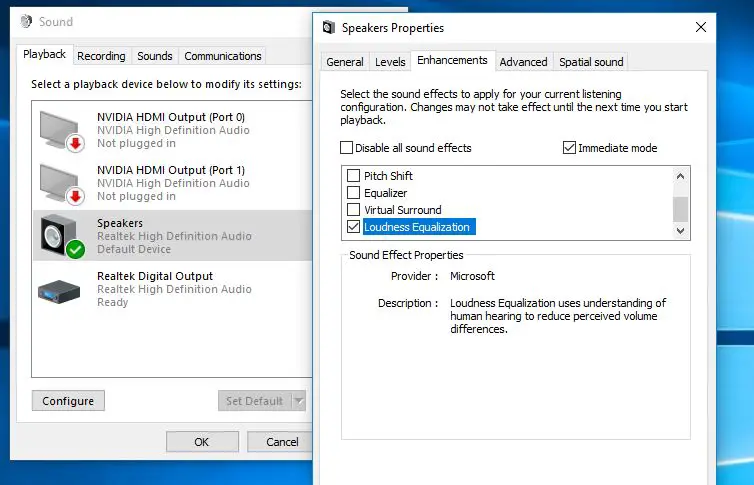
Did these methods assist you in resolving the low volume, audio sound issue on Windows 10? Please let us know in the comments section below, and don’t forget to read:
The “realtek audio low volume windows 10” is a problem that can occur in Windows 10, 8.1 and 7. If you are experiencing this issue, the solution is to adjust your computer’s sound settings
Frequently Asked Questions
How do I increase the volume on my laptop windows 7 8 and 10?
A: You can increase the volume by pressing and holding the up arrow key on your keyboard. This will change it to a small speaker icon, then you just have to click that button in order to raise or lower it.
Why is my windows 7 volume so low?
A: The volume on Windows 7 is often lower than it should be, but there are a number of causes for this. In order to fix these issues you would need to use troubleshooting tools such as Event Viewer and run the System File Checker tool from your Control Panel. You can also try using an alternative audio software or turn off all sound devices in Device Manager that dont have anything plugged into them, then reboot your computer before trying again.
Why is my Windows 10 volume so low?
A: There are multiple reasons for this. One of the most common is that your PC volume and system audio settings may be too low or silent and not affecting Sound Output devices.
Related Tags
- speaker volume suddenly very low
- computer volume too low windows 7
- speaker volume low after windows 10 update
- hp laptop volume too low (windows 10)
- lenovo laptop volume too low windows 10

![[Fixed]](https://imagegod.b-cdn.net/wp-content/uploads/2021/09/1632842247_510_4-Methods-How-To-Recover-Permanently-Deleted-Videos-From-Android.png)